The Flash: The Fastest Show On Television
By Philip Schweier
September 16, 2007 - 09:58
John Wesley's Shipp's comments are taken from a panel at Dragon-Con, Sept. 1, 2007. Other sources include BACK ISSUE #19 and #23.
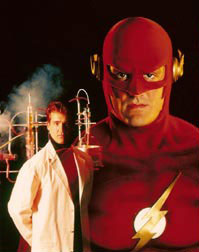 |
In the latter half of the 1980s, comic books had garnered national attention, most notably with Alan Moore’s Watchmen series and Frank Miller’s Batman: The Dark Knight Returns. After two decades, Batman was able to shed the campy image of the 1960s TV show, leading to a hit film in 1990 starring Michael Keaton and Jack Nicholson. The success of the movie prompted film producers to eagerly seek other properties that could be exploited creatively and financially.
By the time Batman was released, producers Danny Bilson and Paul De Meo already had a head start in developing the Flash for television. They began with a TV pilot entitled Unlimited Powers, the tale of a future world in which the government has clamped down on costumed adventurers and super-powered crime-fighters. The Flash is awakened to an oppressive society, and serves to reunite former members of the Justice League and their heirs to spearhead a movement against a totalitarian regime.
The story captured the imagination of CBS enough to green light its development, but the costs of producing such an ambitious series were more than the network could have ever expected, and the pilot never really got beyond the script stage. Bilson and De Meo set their sights a little lower, and began creating another series based around the Flash, but this time as a solo character.
Though there have been multiple versions of the character, Bilson and De Meo preferred the Barry Allen version, despite the fact that he had perished in the comic books a few years earlier, and his mantle assumed by his former protegé. They believed that as a police scientist, the Allen character would lend itself more to a crime drama setting. And as fans, Bilson and De Meo had an automatic respect for the source material, unusual for most Hollywood treatments of comic book super-heroes.
According to actor John Wesley Shipp, who starred on the series, Bilson and De Meo intended to set a dark tone for the show, similar to that of the Batman movie. “Danny said if we had our way we’d have outraged PTAs from across the country calling and complaining about our show every week.“
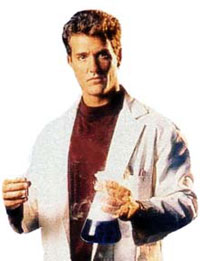 |
| John Wesley Shipp as Barry Allen |
Shipp, a Virgina native, attended Indiana University for two years in the late ‘70s before dropping out. “I was originally in opera/theater in the music department and I switched my major to theater.” He spent a brief time doing theater in Holland, Michigan, before heading to New York City where he found work on soap operas such as Guiding Light and As the World Turns.
Following a stint on One Life to Live, Shipp was considered for The Flash. “I didn’t really know anything about the Flash when I was told about it,” he explains. “I said the same thing that people have said to me: ‘You mean Flash Gordon?” and they said, ‘No.’
“My first impression was ‘No, I don’t want to do a television treatment of a super-hero,’ because my experience with that had been the old Spider-Man series when somebody held a rope off-camera, and I knew I didn’t want to run around in a pair of red tights. But I read the script and thought that this, even free of its comic book roots, was a character that I would enjoy playing.”
It told the story of police scientist Barry Allen, whose lab is struck by a freak bolt of lightning. Doused with a witch’s brew of chemicals, Allen develops super-human speed, which he initially hopes to get rid of. After his older brother Jay is killed, Allen then chooses to use his abilities to avenge his brother’s death.
Such mental and emotional elements offered Shipp something to latch onto as an actor. “All that to me was very interesting. It was ‘somebody killed my brother,’ even though I don’t want to know from whatever is happening to me that causes me to run to catch a bus and end up 30 miles away in the ocean,” Shipp says. “Barry didn’t want to harness the energy, he didn’t want to use it to fight evil. He didn’t want to know anything from it. He had a nice CSI life carved out for himself in the crime lab, he intended to stay there.
“However, once my brother dies, everything changes, and then I want to avenge his death. See, that’s a human motivation. I can wrap my mind around that, and they fleshed it out and treated it with respect.
“I certainly could get behind the drama of the unblessed child,” Shipp continues. “You know, the father who’s saying ‘Whaddaya gonna do, stub your toe on a footprint? Real cops work the streets.’ The brother who was the street cop, the relationship complicated by the fact that the father obviously preferred one over the other, and really discounted what Barry did. And then you take that guy and you give him super-human powers. Then he can exceed anyone’s expectation for what any human being should ever be able to do, and he can’t tell anybody.”
Gail Morgan Hickman, who had written gritty crime dramas such as The Equalizer and Crime Story, was an early scriptwriter, and Howard Chaykin was one of the show’s story editors. Chaykin had made a career for himself as a comic book artist in the 1970s and ‘80s, creating the award-winning American Flagg, and was known for creating multi-layered characters, often in the form of heroes with feet of clay.
Off and Running
The 90-minute series pilot was shot over six weeks in May and June, 1990. Shipp’s theater background enabled him to recognize the collaborative effort that went into producing a weekly TV series.
Tim Thomerson was cast as Barry’s doomed brother Jay – a nod to the golden age Flash, Jay Garrick. Bilson and De Meo had Thomerson in mind for the Flash role when they wrote Unlimited Powers, so casting him as Jay Allen made sense.
Paula Marshall played Barry’s girlfriend, Iris West. In the comics, Iris was originally a reporter for Newsbeat magazine, but feeling that may make her too similar to Lois Lane, the producers gave her a career as an artist instead. Though Barry and Iris eventually marry in the comics, Iris was quickly written out of the show. “I think she appeared much younger than me,” Shipp observes. “Maybe they felt that the chemistry wasn’t right.”
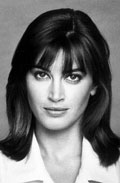 |
| Amanda Pays as Dr. Tina McGee |
Another cast member was Alex Désert, who played Allen’s co-worker Julio Mendez. "He was very funny, very dry, nothing ruffled him,” Shipp remembers. “He was a real stabilizing influence on the set. I don’t fault myself for this, but I tend take things a little seriously, as you can tell. He’d get me to lighten up from time to time. He’d remind that it wasn’t brain surgery, it was the crime lab.”
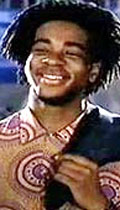 |
| Alex Desert as Julio Mendez |
The Flash required extra effort compared to most shows, due to its individual style, as well as special effects. A key ingredient to a series like The Flash is of course a certain amount of spectacle. “Danny wanted to blow up stuff, and the more stuff the better,” Shipp says. Typically, a stunt double, Dane Farwell, was on hand. “I can’t sing his praises enough. That guy was crazy. They hung me upside down from a 35-foot soundstage and put me into a glass case of water handcuffed, upside down hanging from my ankles. Then they put Dane in and blew up the tank. Out comes Dane off the loading dock with all these gallons of water. He was a wild man.”
Some special effects were less dangerous, but every bit as arduous. Shipp describes a scene in the pilot in which Barry cleans his apartment at super-speed. “Well, I was going in clockwise and picking up pieces of clothes forever. At some point, Dane came in in the same wardrobe and started circling counter-clockwise. We must have done that for seven or eight minutes and that created the illusion. In fact I think probably if you slowed it down you can see that there are actually two of us in the shot going in opposite directions, creating this whole tornado effect.”
While not so dramatic, such moments proved tiresome for the actor. “If it was eating, if it was the card trick at the casino, you just had to do these things for a long time, and eat and eat and eat and eat. That was really the only boring part about it, was having to do this monotonous action and then they’d speed it up and it would take 10 seconds of screen time.” Because such scenes only amounted to a fraction screen time, they added to the labor intensity of the show.
According to Shipp, at $6.5 million dollars, it was the most expensive show Warner Brothers had ever produced for television up to that point, $100,000 budgeted for the costume alone. Designed by Rocketeer creator Dave Stevens, four suits – two for Shipp and two for his stunt double – were built by Robert Short Productions.
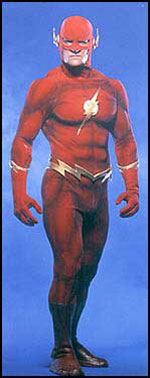 |
“They thought that I had this really weird thing about the suit. They were going to hire me a psychiatrist, and I’m like ‘Guys, it’s hard to work in, that’s all.’ Nobody anticipated the amount to which I would sweat through this suit. I’d be in it for 15 minutes and you could walk up to me and squeeze my arm and it was like a sponge. I’d take the gloves off and they’d be full of water.”
Working in the suit was experimental for everybody. “I’d come in and do Flash scenes,” Shipp explains, “And then I’d do Barry scenes, and then I’d do Flash scenes, and then I’d do Barry scenes. So it was ‘take off the suit, put on makeup, put the suit back on, glue the cowl down again.’ So there were ground rules that we came across, like doing Barry scenes first, then do Flash scenes. If you have to, do Flash scenes, then do Barry scenes, but don’t do Flash/Barry/Flash/Barry/Flash/Barry.”
Another drawback of the costume was they couldn’t be cleaned. “I’d sweat through them, they’d hang them, spray them down with Lysol and hang them in my trailer,” says Shipp. “So at 5 a.m. the next morning I’d be putting on a wet suit, sticky with Lysol.” As a result of sweating through the costume, the foam latex began to deteriorate, leading to constant maintenance on the suit.
After the pilot, Shipp was given a cooling vest similar to what racecar drivers wear. “It had tubing through it and they would hook me up to an ice chest between takes and circulate ice water through the tubes simply to jolt me awake.”
The actor takes the experience of working in the Flash suit in stride. “It was my choice. I could have avoided all the discomfort of the suit by simply choosing not to do the series. I chose to do the series; part of the series involved the suit,” he says. “They were simply the things that had to be worked out. It would have worked out more if we had gone to a second season. But that was the challenge as it would be for any actor who works in anything that requires a suit of that nature.
Shipp also felt that the suit should never have been 100 percent shown, or if it was, only under really dark shadowy conditions. But as with many super-hero adaptations, the costume often does much of the heavy lifting when it comes to convincing the audience that the actor before them is a super-hero. Covered from head to toe in red, the Flash is no exception.
“I felt quite frankly that once the suit came out, and cue the score and special effects, my job was essentially done,” explains Shipp. “I was there, I felt, to bring the audience along with who this guy is, and help them identify on a human and personal level with this guy. Once the mask was put on and the suit came out and all the fun stuff started to happen, you had to have some sort of identification with this with this ordinary guy caught in this extraordinary circumstance.”
With the pilot picked up by the network, shooting of the series began around the third week in August, 1990, running until the second week in May. “We had four days off for Christmas and that was it. We’d start at 7 a.m. Monday morning,” he says. “We’d work until 9 or 10 a.m. Saturday morning, and then we’d come back at 7 a.m. on Monday. That’s how the schedule was. Our poor transportation guys, they were putting in 26, 27-hour days, and I was there between 55 to 80 hours a week. We had nine-day shoots; we had two units running simultaneously and I’d be shuttled back and forth between units. It was shake, rattle and roll that season.
“It was so outrageous, by the third day of our nine day shoots, guest stars would be all glassy-eyed and say, ‘I can’t believe you do this every week.’ We started an episode – I think it was either 3 or 4 a.m. one Saturday morning – the guest director for that episode came staggering onto the back lot, ‘You have got to be kidding me. You guys are crazy.’ But it was a lot of fun.”
For Shipp, getting The Flash up and running was exciting. “Someone once said about being president of Harvard, and how do you head Harvard and a former president said ‘Nobody controls Harvard. Harvard gives you the chance to try to keep up with it.’ That’s how I felt about The Flash. It gave us the opportunity once we were producing the series to try to keep up with it.”
The show occupied about a third of the back lot. Central City was inspired by Anton Furst’s Gotham City design from 1989’s Batman, intending to create a vague “somewhere in the 20th century” feel. The studio also provided two soundstages where, unlike most television shows, episodes were scored with a full orchestra by conductor/composer Shirley Walker. “That was great,” says Shipp proudly, “and another reason I’m glad it’s on DVD. It does justice to her soundtrack.”
Expectations were high, leading to a back lot premier with international press, and reviews in all the major newspapers. The series debuted September 20, 1990, pitted against The Cosby Show and The Simpsons at their peak. Shipp believes CBS may have been too confident. “That was a tough timeslot, but still, in our debut, we held our own. We obviously didn’t win the timeslot, but a new show coming in, the president of CBS said, ‘If you guys continue to do those kinds of numbers, we’re satisfied.’ ”
Being produced by a studio for a network, inevitably there are a series of compromises, but Shipp feels they did manage to respect the piece and the character. He was always stressing the human factor, asking what would happen to a person suddenly gifted with super-powers. “I was always harping on the human element, the human toll,” says Shipp. “You know, what is this doing to this guy? I wanted to get into some cockiness, you know, the whole vigilantism aspect, maybe a little bit of abuse of powers and then checking yourself. I was always saying ‘What would be the psychological toll of super-hero-dom?’ I know that sounds kind of ridiculous on one hand to say, but that’s the way we approached the series. We did not flinch from talking about how we have a reality in which super-human speed is an actual possibility. We’re going to riff with that, and we’re not going to make fun of it, and we’re going to look at it as if it were actually possible and try to say, ‘Okay, what would entail? What would that do?’ “
The writers often permitted Shipp to add to his character in various ways. “Howard (Chaykin) was great,” he says. “If I felt there was something that Barry needed to say, I’d go, ‘You know, guys, I don’t think this is what Barry needs to say here,’ and they’d ask, ‘Well, what do you think?’ and then I’d go, ‘Well, I think this is what he needs to say.’ Okay, great, yeah. They trusted me and I trusted them.”
However, that trust came into question during the production of the Trickster episodes. “I don’t know if the writers were getting back at me for something,” Shipp wonders. “I mean, face down in bubble gum and all that. I remember reading the script and thinking ‘Did I piss you guys off in some way that I was unaware of? Let’s talk this out.’ “
Mark Hamill, who is a big comic book fan, had a great time playing The Trickster, an over-the-top costumed villain. “He dislocated his shoulder in the scene where the Trickster is throwing himself up against the wall in a padded cell. Now that takes dedication. He would’ve been there 25 hours a day if he could have. It was a real shot in the arm, particularly by the time the last episode rolled around. We were all running on fumes by that point because we had been going so long.”
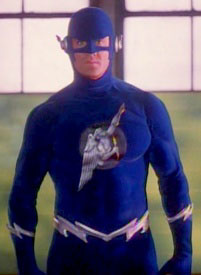 |
“I sort of discovered that Barry is freaked out by this guy. He saw that part of himself as a freak of nature, and that whole thing of him coming to terms, I felt in that episode, to the point of part of him he mistrusted, he didn’t like, he thought it was sinister,” he says. “I found that Barry’s reaction through me was ‘Get him out of my face,’ but there was a process of reconciliation of part of his own self that at one time he would’ve wished to die. Plus I thought the blue suit was really friggin’ cool,” Shipp adds.
Other memorable episodes include Nightshade and its sequel, Deadly Nightshade, in which the Flash meets a retired vigilante played by Jason Bernard, who comes to mentor Barry and offer him a sense of approval he never got from his father. Shipp speculates if some of that was drawn from the relationship between Danny Bilson and his father, director Bruce Bilson
“That was an interesting relationship, and I wonder if Danny pulled on that. His father directed a lot of big shows and was very much in the business and was a big influence on Danny going into the business. It hadn’t occurred to me before but I bet. There were scenes that rang very true to me with Nightshade. I wanted him to come back. Again, the human element, the mentoring being a very interesting concept.”
In time, members of Flash’s Rogues Gallery made their way into the series, although presented in less colorful manner than their comic book counterparts. Speculation is that it might have been an attempt to goose the ratings a bit, as the show began to depart from its original plan. “The initial concept was that it would be a gritty crime show and the one ‘real’ element would be speed,” Shipp explains. “But as it went on, not only in storyline but in look, suddenly I was watching dailies and at one point particularly, it was getting very bright, very colorful – too much, I thought. It should be kept grittier and darker with more of an adult sensibility, but there again, when your ratings aren’t as high as you might want them to be, other people come in with a bunch of ideas about how to fix that. I don’t think it was a mistake to bring in super-villains, as long as we didn’t spin off so far into fantasy land that it came off as silly.
“I just wanted to make sure we did not lose our grit and get so, so far out that we became like the old Batman series and we were bringing in all these villains and we didn’t take anything seriously any more.”
Shipp agrees that from inside the show, the final product became difficult to get a handle on, due to the long hours they were working. “We were working so hard, we weren’t watching the episodes.”
The Finish Line
As Shipp describes it, cancellation evolved through a series of blunders. “The year following, after The Flash had been cancelled, I went to New York to do a play by Brian Friel, an Irish playwright, called Dancing in Luqhnasa, which won the Tony that year as best play on Broadway. And at the Tony Awards I ran into Howard Stringer who was with CBS and he said, ‘We killed that show.’
Maintaining an even pace with two primetime powerhouses every week proved difficult for the freshman series. The network compounded that by preempting the series twice, first on account of the World Series, then because of the start of the first Gulf War. With ratings dwindling, CBS decided to move The Flash from 8-9:00 Thursday to 8:30-9:30. Finally The Flash was moved off Thursdays entirely.
Shipp claims what was disturbing was the comic book fans were writing and calling and saying, “Where are you? We can’t find you.” Obviously, if a show’s core audience can’t find it, then there’s very little hope. “We were an industry hit,” the actor argues. “I had two or three TV Guide covers. I was on Jay Leno twice. He loved the show. The president of CBS was saying ‘This is our hit.’ But it was very poorly managed.”
Many TV shows require a year or so to find their legs, as actors settle into their roles and writers learn to write to the individual strengths of the cast and crew. As a result, The Flash stumbled a bit in the area of personal relationships, specifically that of the romantic tension that only sometimes existed between Barry and Tina. “At the end of one episode you might think we’re going to get our groove on here, and then nothing in the next episode,” says Shipp.
“I think that’s something where we fell down a little bit,” he admits, “in terms of grabbing our audience, making them come back. The danger was that people would watch it, they’d say ‘That’s really cool,’ ...but there weren’t enough recurring themes.”
After production wrapped, Shipp left for New York, where he learned there was a recommendation that to either cut the budget or not come back for a second season. “None of us wanted to cut the budget. I mean, that’s what set us apart. We were trying to do a good job, we felt, and we didn’t want to compromise on that. If you’re going to do a big show, you have to have it in the budget and you have to treat it right.”
Certainly the budget would have only grown had the series gone to a second season. The season opener would have featured Captain Cold, the Mirror Master and the Trickster joining forces against the Flash.
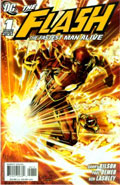 |
| Issue #1 of The Flash: The Fastest Man Alive |
In the years since The Flash, Shipp has been featured in the hit show Dawson’s Creek, as well as guest-starring on numerous prime time series such as CSI: New York and The Closer. He also filmed a movie entitled Karma Police, which is currently in post-production getting ready for Sundance. He describes it as “a very funny, quirky film. It’s about corporate misbehaviour and whistle-blowers and kind of a fanciful twist by John Venable, a young filmmaker.”
Shipp has also stepped behind the camera, directing three half-hour episodes of a prospective new show, Whitaker Bay. He found the experience very fulfilling as an actor. “It really filled my heart to see these kids trying to get the organic process and trying to unlearn what they think acting is. Their beauty and their innocence and the truth of who they are as human beings can come through and be caught on camera. To see that process ignite I find an incredibly moving experience for me, creatively.”
“I love the whole process and experience of acting,” he says. “I feel blessed to have this for my job.
“Hopefully, if your ego is in the right place, based on the efficiency, the effectiveness, the discipline, the skill of what you’re doing, and doing it as a professional, so the cameraman has something to shoot, the sound man has something to record. The lighting man has something to light, and we can all go home proud of the work we’ve done.”
Of his chosen profession, Shipp has no preference of one form over another, though he finds directing a very instructive process. “I’m there with the headphones, watching these takes and I’m yelling cut and I’m looking for truthful behaviour and I’m seeing all of the things that you don’t need to do all the things that we think we need to do in order to be expressive. That actually blocks our expressivity and that’s true in life and it’s true in acting. The simpler, the more centered in our heart, the more real we can try to be, the more expressive we are. Ultimately, when acting is right, it feels like you’re doing nothing, and for people who are standing in the room waiting for them to do something, ‘Whadaya mean cut, whaddaya mean moving on? When are they going to act?’ Well, hopefully they’re not. Hopefully it’s going to be truthful and real.”
In retrospect, Shipp has come to terms with his inner speed-demon. “It was a great experience for me, it was a great show, it was an exciting show. We got a lot of attention, a lot of critical acclaim. It did a lot for me in my transition from theater and soap opera to prime time.”
The Flash was released on DVD in January, 2006, renewing interest and creating a new generation of fans. “It’s been really great because that was 1990/91, so that was a chapter I had turned,” says Shipp. “So to come back now all these years later, you kind of put the DVD in with fear and trembling, but I’m thinking, “Yeah, I own that. I’m glad I did that.”
Praise and adulation? Scorn and ridicule? E-mail me at philip@comicbookbin.com
Related Articles:
The Flash DVD
